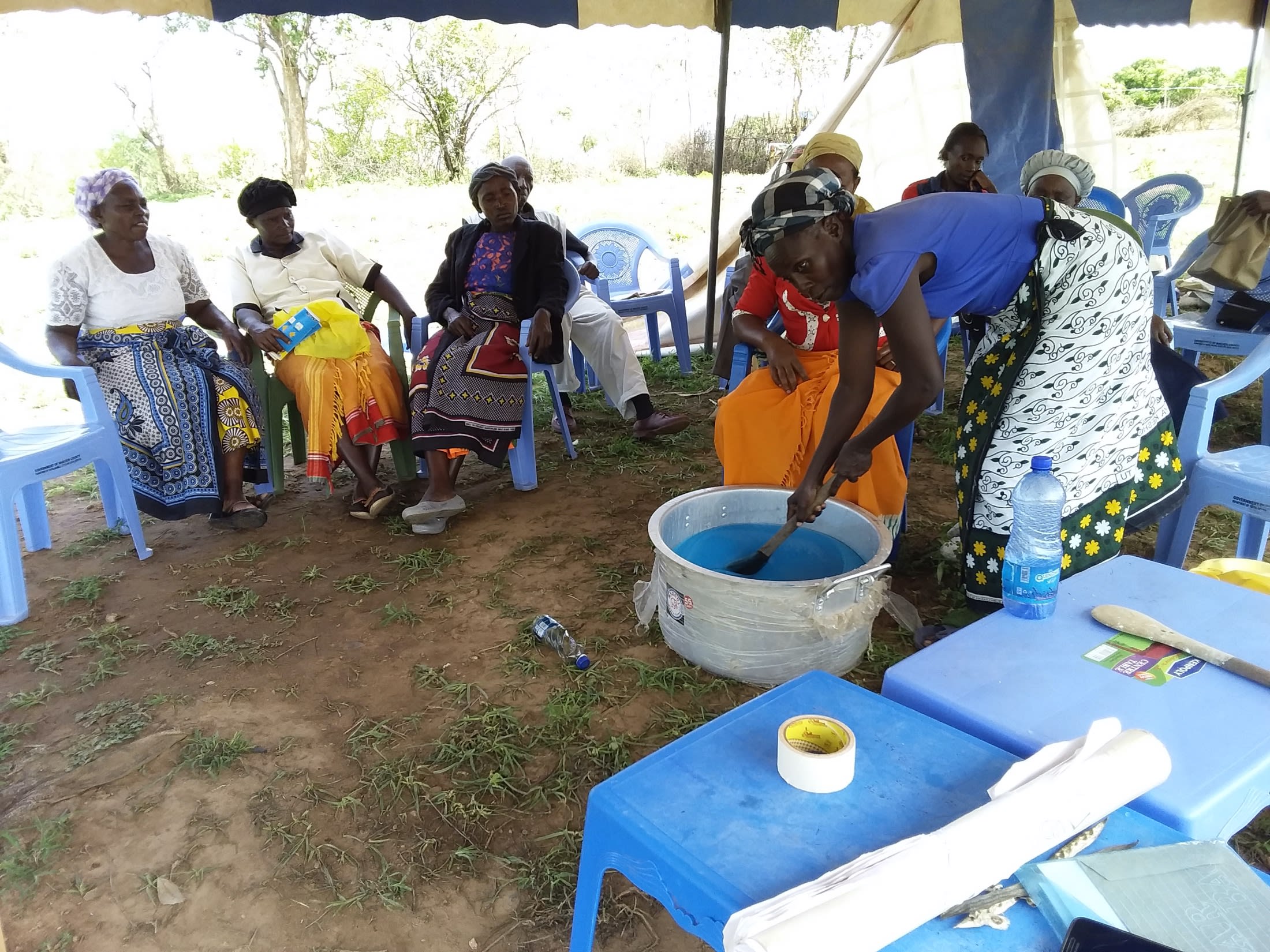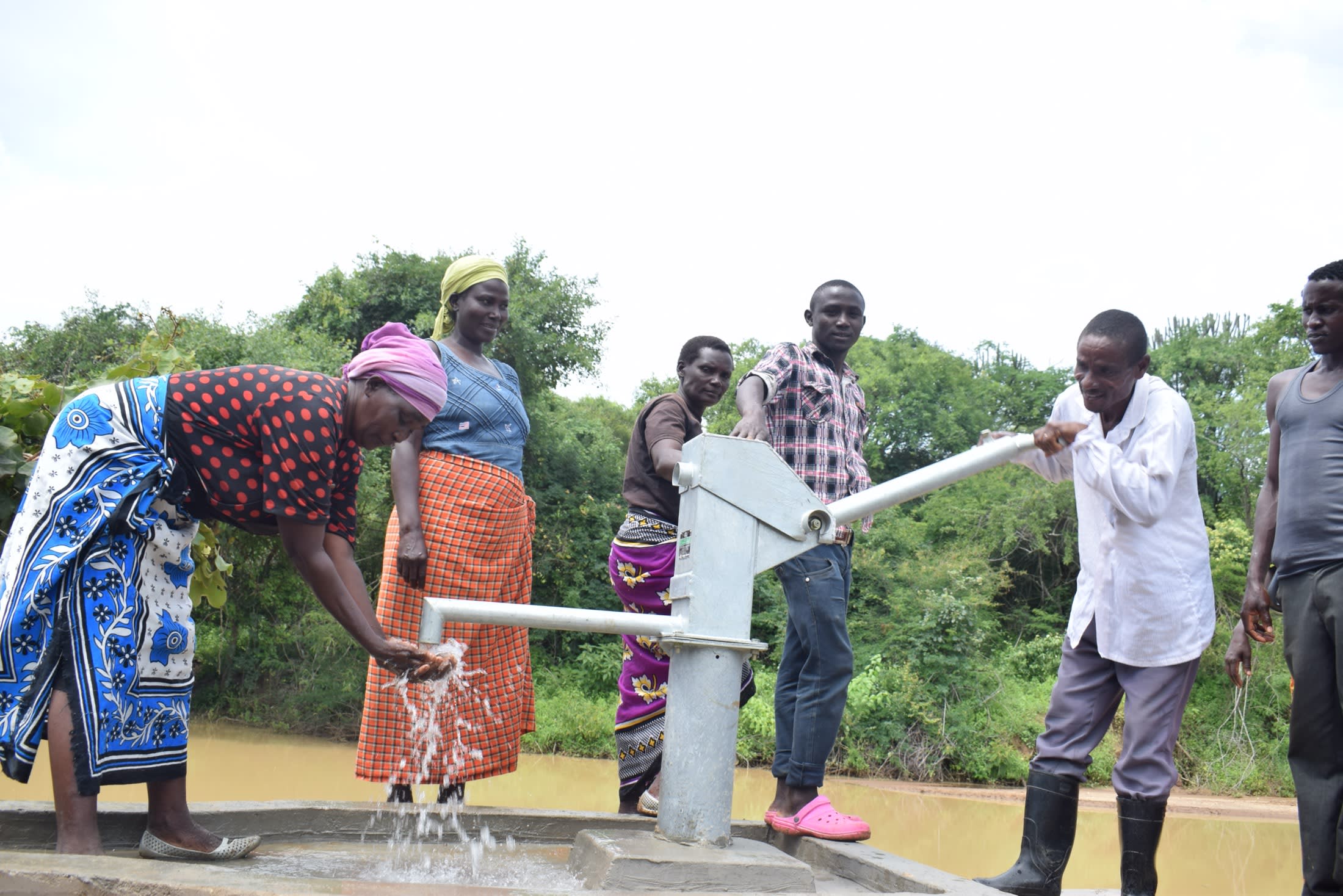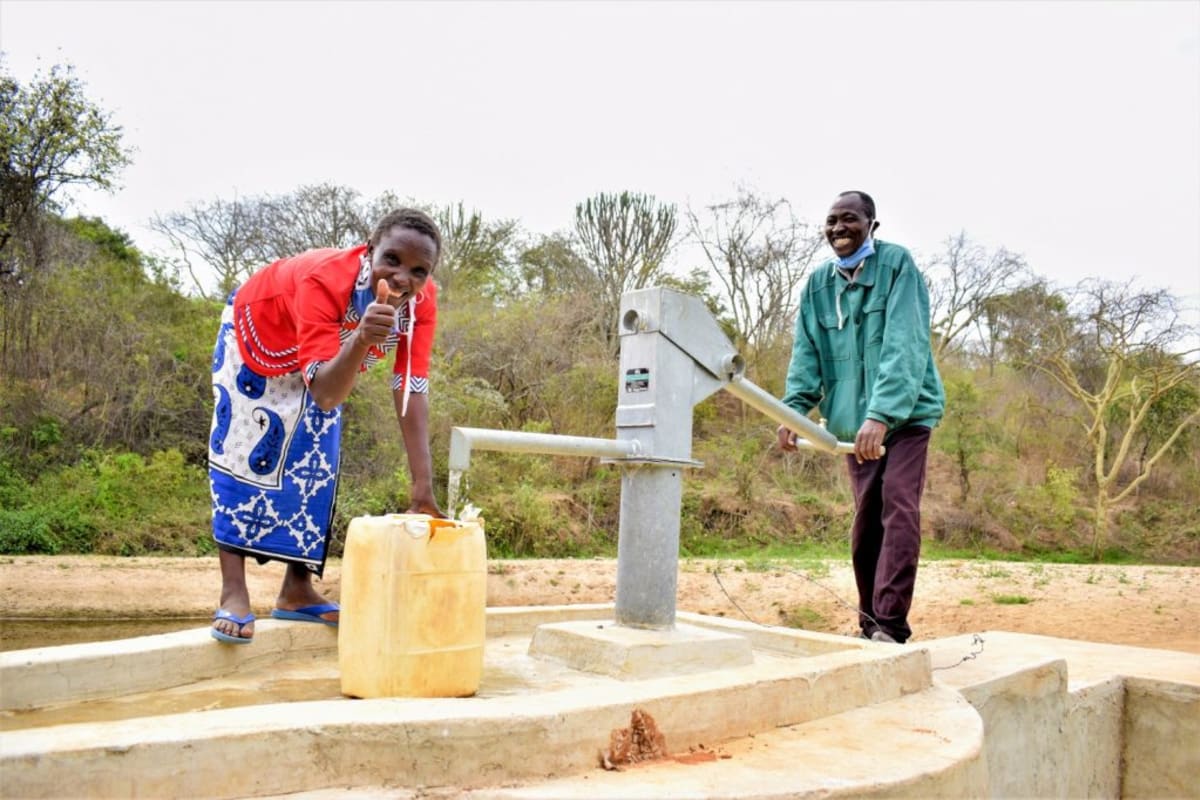Kaketi Community is a very peaceful rural location in Makueni County of southeastern Kenya. More than 1,500 people live here, but most homesteads are built one to three kilometers apart. Most buildings are made of bricks and have iron sheet roofing. Its topography is characterized by dry vegetation, hilly grounds, rocky terrain, and dry rivers.
On the day of our visit, the sun was radiating its hot rays though the atmosphere was still somewhat chilly. High humidity showed us signs of incoming rains.
This region receives very little rainfall throughout the year. However, most community members are farmers who depend on the rainfall for large scale farming. Farming of maize, sorghum, millet, green grams, pigeon peas, cowpeas, and other drought-resistant crops is thus very common.
The community members fetch water at River Kaketi, which goes through their village. However, the river is seasonal and only flows during the rainy season. They rely on this water to ensure that their farms succeed.
On the day of our visit, the river was dry and the community members had to dig scoop holes to access the water. The paths leading to the water source are very rough and rocky, and one may trip and fall on their way there. All of this effort is spent collecting water from an open source which is often contaminated by nearby farms and livestock that drink water from the riverbed.
Some community members hail from far and have to walk for very long distances to access the water source, and their journeys range from two to five kilometers each way. In addition, not all members have donkeys to ferry their jerrycans.
"At times we walk for very long distances to access the water point. It is usually very exhausting," said Lenah Wanza.
"A lot of time is expended in pursuit of clean water and no other activities can be carried out in a day. The water is usually dirty and people contract diseases."
Water scarcity in this region results in many negative consequences. It leads to the contraction of diseases such as bilharzia, cholera, typhoid, and dysentery. The treatment of these diseases is usually very costly for community members, and they have to walk for long distances because there are no nearby health facilities. This leads some families to not seek treatment - putting them at risk of complications from an untreated illness.
Unscrupulous water vendors take advantage of people's dire need of water and inflate the water prices. Due to the extreme poverty levels in the area, they can rarely raise enough money to buy the water. So, they have no choice but to walk these very long distances to access water. When the main river runs dry, some people travel even further to find other sources of water.
Our main entry point into Kaketi Community is the Kalawa People Living with HIV Self-Help Group, which is comprised of 25 farming households that are working together to support people and families affected by HIV/AIDS. They gather together and help out at social events and support people when they are in the hospital. In addition, the group members work together on development projects that are meant to improve the living standards of the entire community. These members will be our hands and feet in both constructing water projects and spreading the message of good hygiene and sanitation to everyone.
What we can do:
Hand-Dug Well
This particular hand-dug well is being built adjacent to this group’s ongoing sand dam project (click here to see), which will supply clean drinking water once it rains. We have supplied the group with the tools needed for excavation. With the guidance of our artisans and mechanics, the excavated well will be cased, sealed with a well pad, and then finished with a new AfriDev pump.
Excavation takes a month or more on average, depending on the nature of the rock beneath. Construction of the well lining and installation of the pump takes 12 days maximum. The well will be lined with a concrete wall including perforations so that once it rains, water will filter in from the sand dam.
This well will bring clean water closer to families having to walk long distances for their water.
Training
We will hold hygiene and sanitation training sessions with the Kalawa People Living with HIV Self-Help Group, which are also open to non-members. These will teach about important hygiene practices and daily habits to establish in the community at the personal and household levels. Taking good care of self and environment will make for a healthy community.
Most households have poor compound hygiene and their general hygiene and sanitation standards are low. In relation to this, they need improvement on compound hygiene, effective water treatment methods, handwashing training, soap making lessons and knowledge of disease transmission routes. The members of this group seem to have little knowledge on hygiene and sanitation. This also exposes them to risks of contracting diseases such as cholera, typhoid, diarrhea and stomachaches.

 Protected Dug Well
Protected Dug Well
 Rehabilitation Project
Rehabilitation Project



































